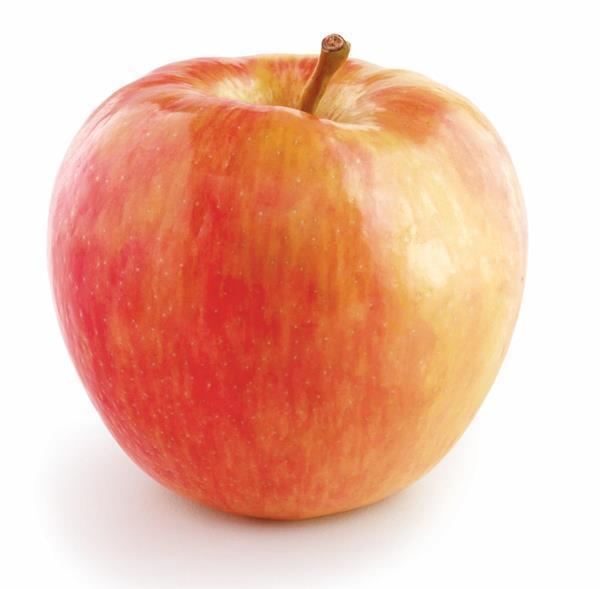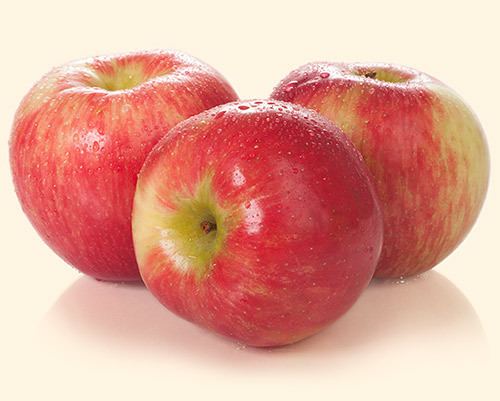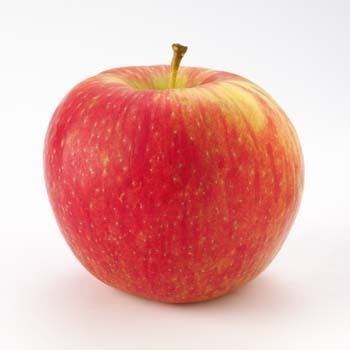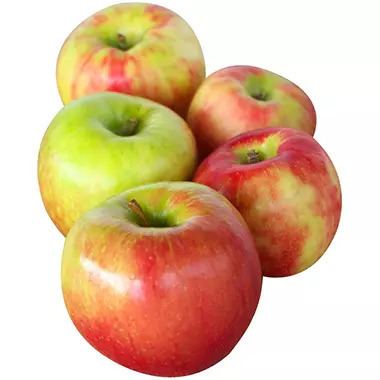Species Malus pumila Higher classification Apple | Hybrid parentage 'Keepsake' × Unknown | |
 | ||
Origin Minneapolis-St. Paul Minnesota, 1960 Scientific name Malus domestica 'Honeycrisp' Similar Apple, Red Delicious, Golden Delicious, Gala, Cortland | ||
Honeycrisp (Malus pumila 'Honeycrisp') is an apple cultivar (cultivated variety) developed at the Minnesota Agricultural Experiment Station's Horticultural Research Center at the University of Minnesota, Twin Cities. Designated in 1974 with the MN 1711 test designation, patented in 1988, and released in 1991, the Honeycrisp, once slated to be discarded, has rapidly become a prized commercial commodity, as its sweetness, firmness, and tartness make it an ideal apple for eating raw. It has much larger cells than most apples, which rupture when bitten to fill the mouth with juice. The Honeycrisp also retains its pigment well and boasts a relatively long shelf life when stored in cool, dry conditions. The name Honeycrisp was trademarked by the University of Minnesota, but university officials were unsure of its protection status in 2007.
Contents

Why honeycrisp apples are so expensive
Genetics

U.S. Plant Patent 7197 and Report 225-1992 (AD-MR-5877-B) from the Horticultural Research Center indicated that the Honeycrisp was a hybrid of the apple cultivars 'Macoun' and 'Honeygold'. However, genetic fingerprinting conducted by a group of researchers in 2004, which included those who were attributed on the US plant patent, determined that neither of these cultivars is a parent of the 'Honeycrisp', but that the 'Keepsake' (another apple developed by the same University of Minnesota crossbreeding program) is one of the parents. The other parent has not been identified, but it might be a numbered selection that could have been discarded since.

The US patent for the 'Honeycrisp' cultivar expired in 2008, though patent protection in some countries continues until as late as 2031. Patent royalties had generated more than $10 million by 2011, split three ways by the University of Minnesota between its inventors, the college and department in which the research was conducted, and a fund for other research. The University of Minnesota crossed Honeycrisp with another of their apple varieties, 'Minnewasheta' (brand name Zestar!), to create a hybrid called 'Minneiska' (brand name SweeTango), released as a managed variety to control how and where it can be grown and sold.
Agriculture

Honeycrisp apple flowers are self-sterile, so another apple variety must be nearby as a pollenizer in order to get fruit. Most other apple varieties will pollenize Honeycrisp, as will varieties of crabapple. Honeycrisp will not come true when grown from seed. Trees grown from the seeds of Honeycrisp apples will be hybrids of Honeycrisp and the pollenizer.
Young trees typically have a lower density of large, well-colored fruit, while mature trees have higher fruit density of fruit with diminished size and color quality. Fruit density can be adjusted through removal of blossom clusters or young fruit to counteract the effect. Flesh firmness is also generally better with lower crop densities.
International growth

As a result of the Honeycrisp apple's growing popularity, the government of Nova Scotia, Canada spent over C$1.5 million funding a 5-year Honeycrisp Orchard Renewal Program from 2005 to 2010 to subsidize apple producers to replace older trees (mainly McIntosh) with newer higher-return varieties of apples, the Honeycrisp, Gala, and Ambrosia.
Apple growers in New Zealand's South Island have begun growing Honeycrisp to supply consumers during the US off-season. The first batch of New Zealand-grown Honeycrisp cultivars being introduced to the North American market have been branded using the "HoneyCrunch" registered trademark. According to the US Apple Association website it is one of the fifteen most popular apple cultivars in the United States.
In culture
In 2006, Andersen Elementary School in Bayport petitioned for the Minnesota state legislature to make the Honeycrisp apple the state fruit; the bill was passed in May 2006.
